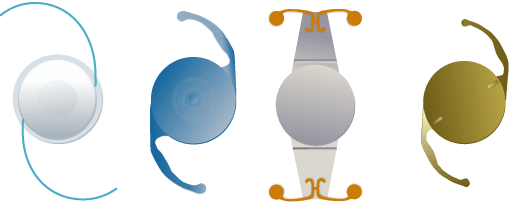The treatment of cataracts typically includes surgical removal of the clouded natural lens and replacing it with a clear, artificial lens. Cataract surgery is the most commonly performed surgical procedure in the United States. Each year over 3 million Americans have cataract surgery. It is an outpatient procedure, usually taking less than 15 minutes.
A cataract is a clouding of the eye’s natural lens resulting in blurred or dimmed vision often causing a loss of contrast or change in color vision. People often describe the effects of cataracts as looking through wax paper or cloudy cellophane. Earlier symptoms may include increased glare while driving at night. Nearly everyone eventually develops cataracts as they age. Contributing factors to cataract development include genetics, trauma, excessive exposure to UV light, chronic disease such as diabetes, steroid use, and smoking. By the age of fifty-five, fifty percent of people have some degree of cataract, and by seventy-five, 70 percent of Americans either have had cataract surgery or cannot see well because of cataracts.



Fortunately, cataracts can be treated with a painless, outpatient procedure. Prior to the procedure, patients receive topical anesthetic eye drops. Once the eye is numb, the surgeon makes a small incision (2.4 mm or less -- less than 1/10 of an inch) through which an ultrasonic probe is inserted. The cloudy lens is then emulsified with ultrasound (in some cases assisted by a laser)and the small particles are irrigated out of the eye through the tiny slit-like opening. A lens implant is then inserted through the small opening where it unfolds inside the eye. Because the incision is so small, it is typically self-sealing, requiring no stitches. The recovery is quite rapid, with most patients usually being able to resume normal activities within a day or two. Often patients need both eyes treated, in which cases the surgeon will typically operate on each eye one to two weeks apart. This is somewhat different from the LASIK procedure, where the surgeon normally operates on both eyes on the same day. Learn more about small incision cataract surgery.
Due to exciting technological advancements, surgeons now have the option of implanting a variety of intraocular lenses after the removal of the eye’s natural lens during cataract surgery. Historically, the standard monofocal or single-vision lens was the only option for intraocular lens implants. Postoperatively, cataract patients still normally required glasses for near and/or distance vision, unless they had a successful monovision correction.
The advent of astigmatism correcting Toric lenses, Multifocal lenses (Panoptix, ReSTOR ActiveFocus, and TECNIS Multifocal lenses), Extended Depth of Focus lenses (Symfony and Symfony Toric lenses), and the Accommodative Crystalens now gives patients and surgeons many more options. Following cataract surgery, patients can often achieve excellent vision at near, intermediate and distance without the need for glasses.

To learn whether or not you may be a candidate for Los Angeles cataract surgery, please take our IOL Self-Evaluation Test.